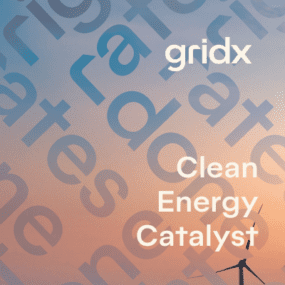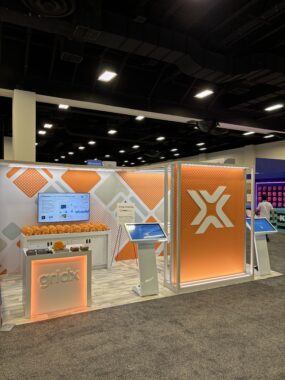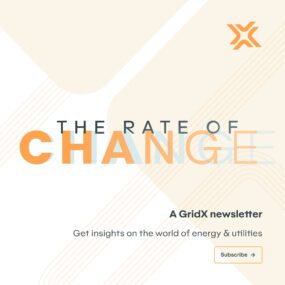Utilities trying new strategies to boost dynamic pricing enrollments
Content by Questline

Energy utilities are swiftly rolling out alternative rate plans to improve grid reliability, reduce fossil fuel generation and meet decarbonization goals.
With more than 53,000 approved rates across U.S. utilities, customers have more options — and more control over their energy bills — than ever before. This is a tenfold increase over the past five years.1 However, many utility customers are unaware of their rate options and the cost-saving benefits. That’s why utilities are utilizing multiple approaches to market dynamic pricing plans to customers.
“As an industry, we’ve done a good job of getting the early adopters switched to an alternate rate plan,” says Scott Engstrom, Chief Customer Officer with GridX, Inc. “However, if utilities want to achieve those aggressive sustainability goals, it’s going to require a large percentage of utility customers to change their energy usage behaviors.”
Why customer education matters
With the growth of beneficial electrification, demand for electricity is at an all-time high. To ensure the electric grid can handle this rising demand, utilities are marketing dynamic pricing, like time-of-use (TOU) rates, at an accelerated pace. According to the Energy Information Administration (EIA), 63% of U.S. customers have a TOU rate plan available to them, but only 7.3% are enrolled.
As this data illustrates, utility customers are unaware of dynamic pricing and the potential benefits from both a savings and sustainability perspective. Since rate plans can be complex and difficult for the average customer to understand, utilities must make education a priority in marketing communications. Without customer education, enrollments will lag behind.
“Most TOU rate plans that have been rolled out are optional, and many eligible customers have yet to take advantage of them,” says Brian Lindamood, Vice President of Marketing and Content Strategy with Questline. “Utility customers don’t understand the complexity of a new rate or how they could benefit from it. To get more customers on board, education is key.”
According to Lindamood, utilities need to explain the “what” and “why” of dynamic pricing without using complicated industry jargon. However, this is only one piece of the puzzle. Education should also familiarize customers with ideal energy usage behaviors, such as running appliances during off-peak periods. Customers may not realize that small changes to their lifestyle can dramatically increase savings.
“Most customers will benefit from an alternative rate plan if they can shift their energy usage to off-peak times,” Lindamood says. “It’s not too much to ask customers to wait a few hours before they run the dishwasher or clothes dryer. However, they must first be aware of off-peak time periods and the benefits of changing their behavior.”
Customer education about dynamic pricing should reach customers in every channel possible, from customer service calls to a utility’s mobile app. Engstrom suggests providing scripts to customer service representatives to encourage enrollments. When customers are on hold, they could also receive messaging like, “We analyzed your energy usage. A better rate is available for you,” that then directs customers to TOU resources.
Leveraging data for personalization
Dynamic pricing is possible because of new technology that enables energy utilities to provide more savings opportunities to customers. With smart meters, or Advanced Metering Infrastructure (AMI), utilities can take advantage of data to create personalized rate plan campaigns to customers. Currently, there are more than 150 million smart meters in the U.S, giving customers the ability to see energy usage data at their fingertips.
“Customers are now able to leverage technology to help them generate savings,” says Michelle Somers, Marketing Manager with PSEG Long Island. “I think the evolution of technology is really pushing us in this new direction, along with the positive impact of renewable resources on climate change. It’s an idea whose time has come.”
Through personalized data from smart meters, utilities have the opportunity to personalize rate plan communications to customers. Rate plan comparisons can tell a customer how much they could save with a new rate plan. Rather than telling customers what an “average customer” would save, smart meter data can personalize messaging to give customers an accurate picture of their usage and potential savings.
“The great thing about smart meters is they enable utilities to provide personalized messages to customers,” Engstrom says. “It’s not just a blanket message to everyone on your email list. Instead, utilities can say, ‘Mrs. Smith, did you know if you shift just 10% of your energy usage to an off-peak period, you could save money?’ These personalized messages are very effective at enrolling customers.”
With PSEG Long Island’s Rate Comparison Tool, customers can log into My Account to analyze their energy usage and see if they’re on the best rate for their unique energy behaviors. This tool is promoted in the utility’s TOU marketing campaigns to show customers how much they could save by switching to a different rate plan.
“Our Rate Comparison Tool provides a detailed analysis to help customers figure out if they’re on the right rate, or if there is a better option that will generate more savings,” Somers says. “In essence, this tool does the homework for them.”
For PSEG Long Island, the first step to marketing TOU was reaching a small group of early adopters. These customers were already using energy in the right way, such as charging their electric vehicle at night or running their dishwasher before bedtime. They simply hadn’t capitalized on the savings of a TOU rate plan.
“We started with marketing to those customers who are already doing what they need to from a TOU standpoint,” Somers says. “If they get on the new rate, they can probably save somewhere between 10% and 40% on their energy bills. These customers are the poster children for how to save money on TOU.”
Messages that maximize engagement
Segmentation allows utility marketers to better target customers and tailor specific messages to different groups based on how a rate plan would affect their bills.
For example, distinct marketing messages could be sent to two groups of customers: those who would save money on a TOU rate based on their current behavior and those who would need to change their energy behavior to save. Other personas could be layered onto a savings message to maximize engagement, such as promoting the green benefits to environmentally minded customers.
Another benefit of dynamic pricing is the ability for customers to “take control of their energy usage.” This messaging is a powerful motivator for customers, Engstrom notes. When customers can save money through their own energy choices, they feel more empowered.
“For a lot of customers, even those who may have higher bills, they like the idea of taking control of their energy usage,” Engstrom says. “They are making the choice to use energy, even if it’s during a more expensive timeframe. They own that decision, which creates a better customer experience.”
Smart home automation is key for success
Smart home automation will become vital for customers to take advantage of dynamic pricing plans, according to Lindamood. With smart home devices, customers can easily set up their appliances to run during off-peak times. Smart home automation allows customers to “set it and forget it” so they don’t have to think about their energy behaviors.
“Asking customers to change their behavior is one thing,” Lindamood says. “But helping them to save automatically by setting up their smart thermostat or other devices is where the real savings come from. To get to that point, utilities need that solid foundation of education.”
Engstrom also recommends utilities take advantage of smart home automation to market alternative rate plans. For example, customers can ask, “Hey, Alexa, do you have a better rate plan for me?” and utilities can provide the requested information. “This gives customers what they want where they want it,” Engstrom says. “It’s essential to reach customers in the different channels they engage with nowadays.”
Going forward, utilities must continue to educate customers about the benefits of shifting their behavior to off-peak periods. In addition to the cost savings, many customers don’t realize how dynamic pricing plays a larger role in grid reliability and decarbonization efforts.
“As climate change progresses and technology capabilities increase, we will continue to provide education and outreach to our customers,” Somers says. “We want them to understand that moving to TOU is good for the environment, and good for their pockets, if they’re able to make small behavior shifts.”
1. GridX data

GridX Announces $40 Million in Series C Funding and Appoints New CEO
Investment to drive the development of rate analytics and complex billing solutions that accelerate our clean energy transition; industry veteran Chris Black takes the helm of fast-growing company.





